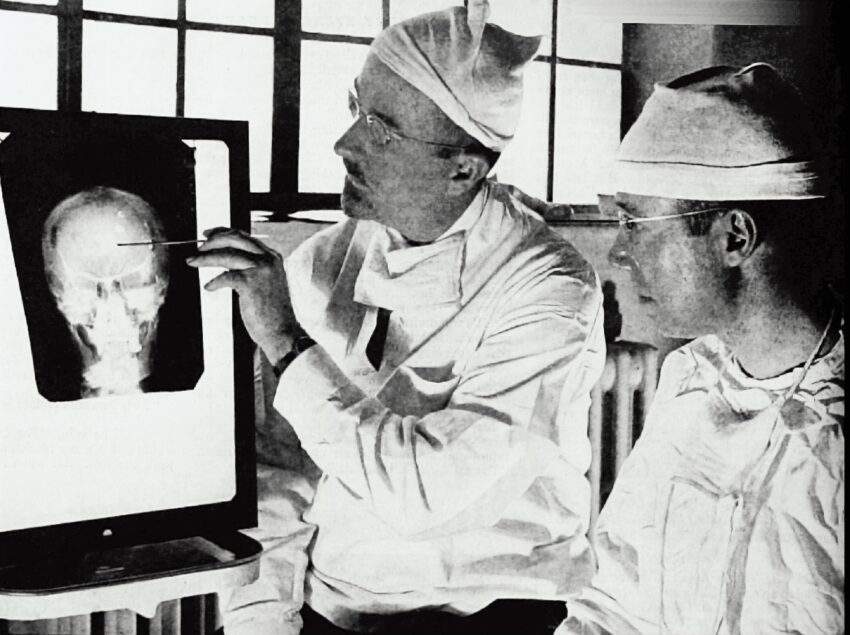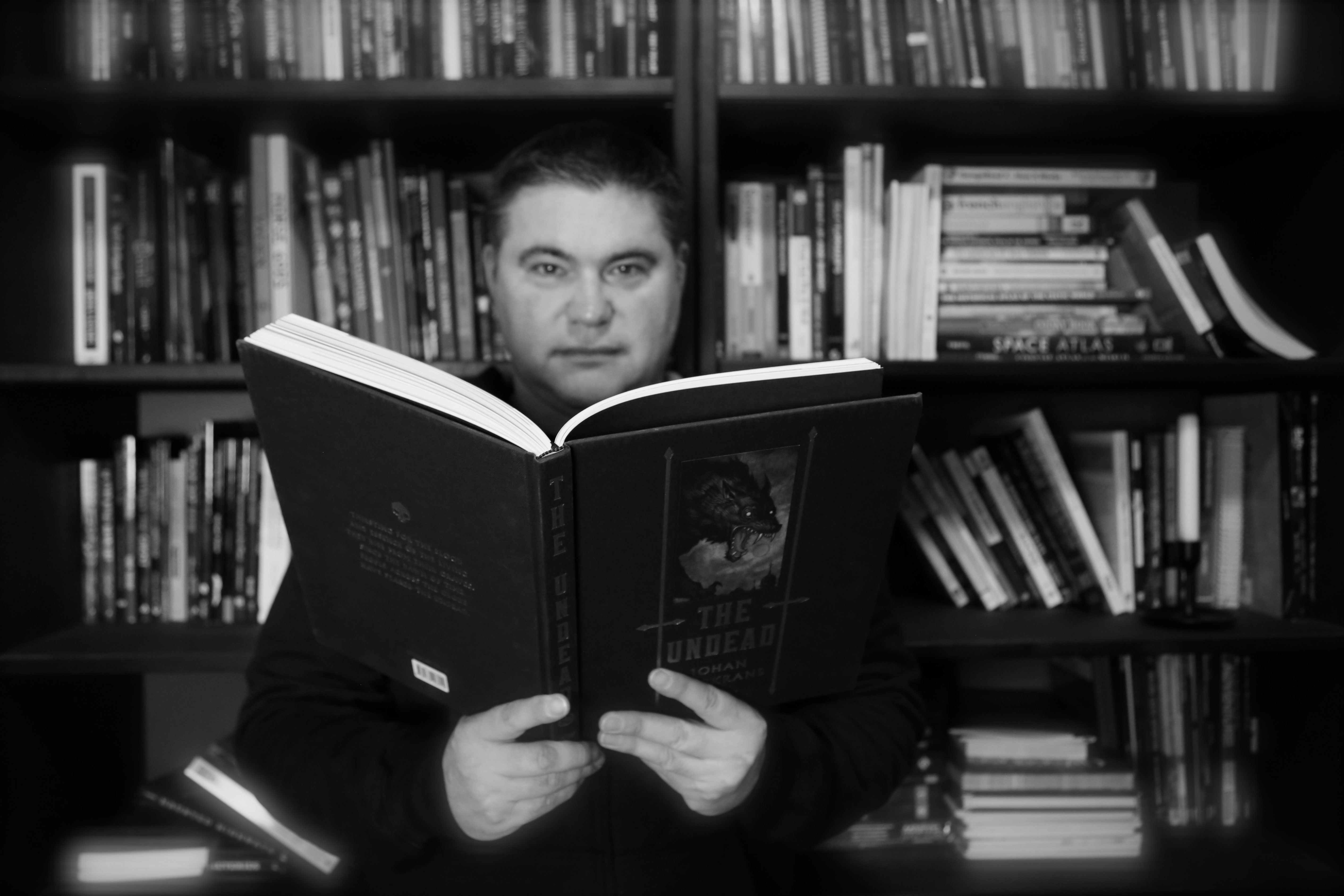
The Lobotomy | Mental Health’s Darkest Chapter
I recently got a lobotomy kit allegedly used by Dr. Walter Freeman. It was used at Harlem Valley Asylum in Dover, New York. The kit came with a morgue tag, so the orbitoclast, the ice-pick instrument, may have killed someone, but that’s speculation. Get the scoop after jump.
So, I became obsessed with learning more about lobotomies while researching Western State Hospital and Manteno State Hospital. Everyone knows how awful it was to be a patient there. But the procedure ended before I was born. If I wanted to research it, I needed to get a ‘feel’ for the procedure.
When I saw a kit available to buy, I jumped at the chance to get it. So, here’s a little gallery and then the history of the lobotomy.
Orbitoclast and Hammer Set Gallery





The History of the Lobotomy

The lobotomy, once heralded as a groundbreaking psychiatric treatment, has since become a symbol of the dangers of unchecked medical experimentation. Developed in the early 20th century, this surgical procedure aimed to treat mental illness by severing connections in the brain’s prefrontal cortex. While it earned its proponents acclaim in its early years, the procedure left countless patients with irreversible damage and became one of the most controversial practices in medical history.
Origins and Development

The lobotomy originated in Portugal in 1935 when neurologist António Egas Moniz introduced the leucotomy, a procedure involving the drilling of holes into the skull to cut brain tissue. Moniz believed that severing connections in the prefrontal cortex would alleviate symptoms of mental illness, particularly in patients with severe depression, anxiety, or psychosis. For his work, Moniz was awarded the Nobel Prize in Physiology or Medicine in 1949.
The procedure gained popularity in the United States thanks to Dr. Walter Freeman, a neurologist who developed the transorbital lobotomy in the 1940s. This method involved inserting an ice-pick-like instrument through the patient’s eye socket and manipulating it to sever brain tissue, eliminating the need for drilling. Freeman’s method was faster, less expensive, and could be performed outside a hospital setting, which contributed to its widespread use.
The Rise and Fall of the Lobotomy

By the mid-20th century, lobotomies had become a standard treatment for a range of mental illnesses, including schizophrenia, bipolar disorder, and severe anxiety. Freeman conducted thousands of lobotomies, often traveling across the country in his “lobotomobile” to perform the procedure in clinics and institutions.
However, the results were devastating for many patients. While some experienced temporary improvements, others were left with significant cognitive and emotional impairments. Many lobotomy patients lost the ability to live independently, while others succumbed to infections or complications from the surgery.
The advent of antipsychotic medications in the 1950s, such as chlorpromazine (Thorazine), rendered the lobotomy obsolete. These drugs offered a safer and more effective way to treat psychiatric conditions, and by the 1970s, the lobotomy had fallen out of favor. Today, the procedure is regarded as a cautionary tale in medical ethics and the treatment of mental illness.
The procedures developed by António Egas Moniz and Walter Freeman differed significantly in their methods, goals, and accessibility. Here’s a comparison of the two approaches:
Key Differences Between A Leucotomy and Lobotomy
| Aspect | Moniz’s Leucotomy | Freeman’s Transorbital Lobotomy |
|---|---|---|
| Method | Surgical cutting of brain tissue via drilled holes in the skull. | Ice-pick insertion through the eye socket. |
| Surgical Environment | Required sterile hospital settings. | Performed in clinics or non-sterile environments. |
| Tools Used | Leucotome (wire loop device). | Orbitoclast (ice-pick-like tool). |
| Time Required | Lengthy and meticulous. | Quick, sometimes under 10 minutes. |
| Goal | Precision treatment of specific mental illnesses. | Accessible, rapid treatment for a wide range of disorders. |
| Safety and Outcomes | Moderate success with fewer severe impairments. | High risk of cognitive and emotional damage. |
Moniz’s leucotomy was more precise and cautious, whereas Freeman’s transorbital lobotomy prioritized speed and accessibility at the expense of patient well-being. These differences highlight the trajectory of lobotomy’s rise and fall, ultimately revealing its profound ethical and medical shortcomings.
Demographics of Lobotomy Patients

During its peak in the 1940s and 1950s, lobotomies were disproportionately performed on marginalized groups. Key demographics include:
Women: Women were more likely than men to undergo lobotomies, often for conditions such as postpartum depression, “hysteria,” or anxiety. In many cases, societal pressures to conform to traditional roles played a part in the decision to operate.
Children: Disturbingly, children as young as 12 were subjected to lobotomies for behavioral issues or intellectual disabilities. Howard Dully, one of the youngest documented lobotomy patients, underwent the procedure at 12 years old because his stepmother considered him “unmanageable.”
Institutionalized Patients: The majority of lobotomies were performed on patients in asylums and psychiatric institutions, many of whom were from low-income or underprivileged backgrounds. They often lacked the ability to consent to the procedure.
Minorities: Historical records suggest that racial and ethnic minorities were disproportionately targeted for lobotomies in some regions, reflecting broader patterns of systemic discrimination in medicine.
Timeline of the Lobotomy

1935: António Egas Moniz performs the first leucotomy in Portugal.
1936: Walter Freeman and James Watts conduct the first lobotomy in the United States.
1940s: The transorbital lobotomy is developed by Freeman, making the procedure faster and more accessible.
1949: Moniz receives the Nobel Prize for his contributions to psychosurgery.
1950s: The introduction of antipsychotic drugs like Thorazine reduces the need for surgical interventions.
1967: Walter Freeman performs his last lobotomy after a patient, Helen Mortensen, dies during surgery.
1970s: The lobotomy is largely abandoned as a treatment for mental illness.
1980s: Advocacy and awareness campaigns highlight the ethical failures of lobotomies, leading to greater scrutiny of past practices.
Present Day: Lobotomies are regarded as a dark chapter in medical history, with renewed focus on patient rights and ethical standards.
Sources
El-Hai, Jack. The Lobotomist: A Maverick Medical Genius and His Tragic Quest to Rid the World of Mental Illness. John Wiley & Sons, 2005.
Tierney, John. “The Cautionary Tale of Walter Freeman and the Lobotomy.” The New York Times, 16 Nov. 2005, https://www.nytimes.com/2005/11/16/books/the-cautionary-tale-of-walter-freeman-and-the-lobotomy.html.
Walter Jackson Freeman II. Wikipedia, Wikimedia Foundation, https://en.wikipedia.org/wiki/Walter_Jackson_Freeman_II. Accessed 6 Dec. 2024.
Caruso, James P., and Jason P. Sheehan. “Psychosurgery, Ethics, and Media: A History of Walter Freeman and the Lobotomy.” Neurosurgical Focus, vol. 43, no. 3, 2017, p. E6. https://thejns.org/focus/view/journals/neurosurg-focus/43/3/article-pE6.xml.
“Lobotomy.” Wikipedia, Wikimedia Foundation, https://en.wikipedia.org/wiki/Lobotomy. Accessed 6 Dec. 2024.
“Orbitoclast.” Wikipedia, Wikimedia Foundation, https://en.wikipedia.org/wiki/Orbitoclast. Accessed 6 Dec. 2024.
“Psychosurgery.” Wikipedia, Wikimedia Foundation, https://en.wikipedia.org/wiki/Psychosurgery. Accessed 6 Dec. 2024.
“My Lobotomy.” StoryCorps, https://storycorps.org/stories/my-lobotomy/. Accessed 6 Dec. 2024.
“Walter Freeman and the Sordid History of the Lobotomy.” All That’s Interesting, 2016, https://allthatsinteresting.com/lobotomy-walter-freeman. Accessed 6 Dec. 2024.
“Horrifying Before and After Stories of Lobotomy Victims.” Science Sensei, 2020, https://sciencesensei.com/lobotomy-victims-before-and-after-stories/18/. Accessed 6 Dec. 2024.
“10 Horrifying Examples of People Subjected to Lobotomies and Their Tragic Results.” History Collection, https://historycollection.com/10-horrifying-examples-people-subjected-lobotomies-tragic-results/. Accessed 6 Dec. 2024.
“Walter Jackson Freeman II.” Encyclopaedia Britannica, https://www.britannica.com/biography/Walter-Jackson-Freeman-II. Accessed 6 Dec. 2024.
